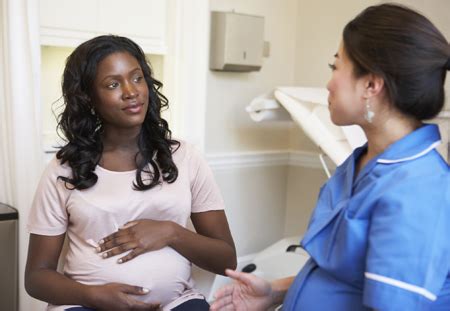Summary of Maternal Instinct Development
Maternal death and health issues in low-income communities can be prevented by providing support and appropriate nutrition and exercise information. Maternal Instincts will focus on the setting in each program application, as this can change based on where it is being implemented. There will need to be a cultural component based on the needs assessment of the specific group. The program will be aimed at the primary level of prevention. We want to prevent illness in pregnant mothers before it exists. However, there may be participants in the secondary prevention bracket, and that is a case by case situation. Maternal Instincts will be aimed at multiple levels of influence. These include: the intrapersonal level- increasing nutrition knowledge surrounding pregnancy; the interpersonal level- peer support from local moms and translators; and the community level- local doctors offices and stores, the physical environment (transportation)and culture. Since each of these levels are included, Maternal Instincts used multiple theories to create activities and interventions. The theories used in development of the program are: the Health Belief Model, Social Cognitive Theory and Community Building.
A Rationale for the Development of Maternal Instincts
The World Health Organization has noted that, “every day in 2017, approximately 810 women die from preventable causes related to pregnancy and childbirth” (WHO, 2019). Maternal mortality is one of the world’s most critical challenges. Most of these deaths occurred in low and lower-middle income countries. However, it is still an increasing problem within the United States. The U.S. has one of the highest rates of maternal death in the developed world and it has been increasing since the 1990s. “These adverse outcomes are also marked by significant racial disparities, with non-Hispanic black and American Indian/Alaska Native women at least 3 times as likely as non-Hispanic white women to die around the time of childbirth” (Peahl, A., Kozhimannil, K., & Admon, L., 2019).
In Massachusetts (MA), maternal deaths are rare (MA is second best only to Alaska), but racial, ethnic, and socioeconomic disparities persist, and affect health outcomes for these populations. MA has almost fifty programs and services targeting pregnant women, infants and children (mass.gov). On the Southcoast of MA, it is noted that Black and Hispanic communities begin prenatal care later than their white counterparts (Community Health Needs Assessment 2016., n.d.). It is recommended to call the doctor to schedule the first prenatal visit anywhere between 6-12 weeks (HealthPartners, 2020). “Greater New Bedford has shown improvement in both prenatal indicators: percentage beginning care in the first trimester increased by 5.7 percent and the percentage of mothers with adequate prenatal care improved by 1.1 percent (Community Health Needs Assessment 2016., n.d.). However, Blacks and Hispanics have significantly lower rates of beginning prenatal care during the first trimester compared to their caucasian counterparts (Community Health Needs Assessment 2016., n.d.).
“The Southcoast has a less diverse population than the Commonwealth; 82.7 percent of Southcoast residents are White alone, compared to 75.0 percent statewide. A notable exception in the region is New Bedford, where non-White residents account for one-third (33.0%) of the total population” (Community Health Needs Assessment 2016., n.d.). Education is lagging in MA and especially New Bedford, where 28.9% of adults have not completed high school. Nearly a quarter of the population lives in poverty. In Fall River (a similar city to New Bedford on the Southcoast) and New Bedford, 42,660 individuals account for 80.7 percent of all people in poverty living in the Southcoast, while the two cities account for 54.4 percent of the region’s total population (Community Health Needs Assessment 2016., n.d.). That’s more people than can fit in Fenway Park (37,402) (List of U.S. stadiums by capacity., 2020)! Clearly, the lack of education and people living in poverty in the New Bedford area is immense. In order to address the problem, the program will need to be culturally appropriate and educational.
The problem at hand is the maternal and infant death rates in low socio-economic areas. Generally, this population is made up of minorities (New Bedford= Black and Hispanic) who have limited access to transportation, healthcare, education and a support system they trust. After reviewing the data above, maternal death is normally preventable by maintaining a healthy lifestyle, knowing when to go to the doctor for help and having a support system (Peahl, A., Kozhimannil, K., & Admon, L., 2019). If maternal death rates are the focus, then infant death rates also decrease and lives are saved. An infant needs the mother to develop properly in the early days after birth.
This program will focus on improving the health of pregnant women through lifestyle changes, by arming them with the knowledge to make smart choices and decisions regarding their own health and the health of their baby. The program will focus on the individual and the community environment. According to interviewees in the needs assessment, there is a lack of affordable and safe housing for low-income communities in New Bedford. Feeling unsafe affects well-being and adversely impacts health in these households (Community Health Needs Assessment 2016., n.d.). This is where a support system will be beneficial. Less stress and nutrition education means a healthier pregnancy. A healthier pregnancy means less maternal and infant deaths and less adverse outcomes during labor and delivery.
Ideally, there will be two education programs, one in person and one online. The in-person progam will be two parts and consist of nutrition imformation and exercise information for a healthy pregnancy. The optional third piece will be a hands on cooking demonstration. The next class will be an online course on how to save money and shop on a budget. This will be imperative for the population to be successful in this program. There will also be members of the community, specifically other moms, who will support these pregnant participants. There will be people who can transport them to appointments via car and translators who will stay with them during the appointment. This will eliminate missed appointments due to transporation or confusion regarding medical jargon.
There have been many successful programs pertaining to pregnant mothers in low-income areas all over the world (Abrahams, Z., Lund, C., Field, S, & Honikman, S., 2018; Dodd, J. M., et. al., 2018; Teixeira, J., et al., 2018).The timing is always right to focus on maternal and in turn, infant health. After all, today’s infants are our future leaders, investors, veterans and teachers! Most of all, they are the future of our community and the success of our city, region, state and country as a whole.
References
WHO (2019)
Peahl, A., Kozhimannil, K., & Admon, L. (2019) Addressing The US Maternal Health Crisis: Policies Of 2020 Presidential Candidates. Health Affairs Blog. DOI: 10.1377/hblog20190625.583781
Massachusetts State Health Assessment. Retrieved from: https://www.mass.gov/doc/chapter-2-maternal-infant-and-child-health/download
https://www.southcoast.org/wp-content/uploads/2016/05/South-Coast-CHNA-2016-Final.pdf
List of U.S. stadiums by capacity. (2020). Retrieved from https://en.wikipedia.org/wiki/List_of_U.S._stadiums_by_capacity
Community Health Needs Assessment 2016. (n.d.). Retrieved from https://www.southcoast.org/community-benefits/programs/south-coast-chna-2016-final/
Abrahams, Z., Lund, C., Field, S, & Honikman, S. (2018) Factors associated with household food insecurity and depression in pregnant South African women from a low socio-economic setting: a cross-sectional study. Social Psychiatry and Psychiatric Epidemiology. 53:363–372 https://doi.org/10.1007/s00127-018-1497-y
Dodd, J. M., McPhee, A. J., Deussen, A. R., Louise, J., Yelland, L. N., Owens, J. A., & Robinson, J. S. (2018). Effects of an antenatal dietary intervention in overweight and obese women on 6 month infant outcomes: Follow-up from the LIMIT randomised trial. International Journal of Obesity, 42(7), 1326-1335. doi:http://dx.doi.org.proxyau.wrlc.org/10.1038/s41366-018-0019-z
Teixeira, J., et al. (2018) Dietary patterns are influenced by socio- demographic conditions of women in childbearing age: a cohort study of pregnant women. BMC Public Health. 18:301 https://doi.org/10.1186/s12889-018-5184-4
Logic Model:
| Inputs | Activities | Outputs | ST Outcomes | IT Outcomes | LT Outcomes |
|
Personnel Funding Supplies Space Educational Materials |
Educate community about program | Local markets are accepting brochures to distribute to community | Change in awareness and knowledge of program | Increase in implementation of program | Increase in selling healthier options at local markets |
|
Personnel Funding Supplies Space Educational Materials |
Educate health care providers about program | Local offices are accepting brochures to distribute to community | Change in awareness and knowledge of program | Increase in implementation of program | Decrease in missed prenatal visits and prolonging healthcare |
|
Personnel Funding Supplies Space Educational Materials |
Educate pregnant women about exercise during pregnancy | 100+ pregnant (or going to be pregnant) women are on social media pages | Change in knowledge, attitudes, beliefs and motivations | Increase in exercise during pregnancy | Decrease in maternal health problems and death |
|
Personnel Funding Supplies Space Educational Materials |
Educate pregnant women about nutrition during pregnancy | 100+ pregnant (or going to be pregnant) women are on social media pages | Change in knowledge, attitudes, beliefs and motivations | Increase in nutritional meals cooked at home during pregnancy | Decrease in maternal health problems and death |
|
Personnel Funding Supplies Space Educational Materials |
Create peer support group and guidelines | Active recruitment of peers- 30+ volunteers | Increase in implementation and acceptance of peer support | Increase in utilization of peer support | Increase in attending appointments due to transportation, translators and feeling safe |
|
Personnel Funding Supplies Space Educational Materials |
Partnership guidelines established | Active recruitment of partners (community and city-level) | Partners identified and activated | Partners identified and activated | Partners identified and activated |




Objectives of the Maternal Instincts Program
By January 31, 2021, program planners and volunteers will distribute informational brochures to 70% of local doctors offices and local corner stores/supermarkets.
By January 31, 2021, program planners and volunteers will deliver notebooks and pens to everyone who signed up for the program.
When asked via text/email, one out of three pregnant women will be able to create a nutritionally dense meal out of ten possible ingredients.
When asked via text/email, 50% of pregnant women will be able to explain why exercise during pregnancy is important.
After the telephone follow-up, 50% of pregnant women will still have contact with their peer support aide.
After telephone follow-up, 1 out of 3 pregnant women will be cooking 3-5 dinner meals per week at home to save money..
By July 2021, all pregnant women who need translators to attend doctors visits with them, will be provided.
By July 2021, all pregnant women who want it will be provided transportation to and from doctors visits.
By the year 2022, maternal deaths in New Bedford, Ma, within the low-income community will stay the same or decrease by 10%.
